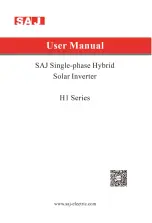
T-360
2–10
c. Water Temperature Gauge (see
)
The function of this gauge is to observe water operating temperature. The gauge is connected to the
water temperature sensor.
d. Water Temperature Sensor (see
)
This device senses engine water temperature and transmits a signal to the water temperature gauge.
)
This device senses the coolant level inside the radiator and will complete a conductive circuit as long as
the probes remain immersed in coolant. When coolant level falls below the probes, a signal is sent to the
auto restart module, shutting down the engine & all 12-volt circuitry.
f. Auto Restart Module (If So Equipped) see
Auto start/restart is provided to simplify the start-up process and provide an automatic restart feature that
will automatically attempt to restart the unit in the event of shutdown. Four LEDs are used to indicate
shutdown from overcrank, overspeed, low oil pressure, and high water temperature. A fifth LED is used
to indicate the unit is running (see
). Refer to
for system preset values.
The auto restart function will perform a series of six attempts to restart the unit and make three attempts
within each series. Once the function has completed all 18 attempts, the unit will automatically lock out
future crank attempts. Refer to
for detailed information on auto restart sequencing.
2. Meters
a. Ammeter (A)
The ammeter (see
) is an indicator of the charging system and unit electrical draw. It indi-
cates the rate of discharge or charge of the battery. During start up, the intake heater draws approxi-
mately 42 amps.
b. Total Time Meter (TT)
The total time meter (see
) calculates the total hours and provides an accurate readout of
accumulated engine running time. This data can be used to establish proper maintenance schedules
(refer to Section 4.1).
3. Manual Switches
a. Intake Heater Switch (HS) (see
The intake heater switch is a momentary switch. When held in the PREHEAT position, the switch allows
approximately 42 amps of battery current to flow into the intake heater, which preheats the air within the
intake manifold and allows the engine to start. After starting the engine, the intake heater switch should
continue to be held in the ON position for approximately 5 seconds until the engine has developed
enough oil pressure to close the oil pressure safety switch.
b. Ignition Switch (IGN) (see
The ignition switch is a momentary switch that has OFF/ON/START positions. When held in the START
(ignition) position, it energizes the starter motor solenoid, which in turn allows the starter motor to crank
the engine. The switch is released to the RUN position once the engine has started.
c. Ignition Switch (IGN)(Auto Restart) (see
)
The ignition switch is a maintained contact switch that has the RUN/OFF positions. When switched to the
RUN position, it energizes the control module, which in turn controls all functions of the Genset.
4. Timers
a. Intake Heater Timer (IHT) (If So Equipped)
The Intake Heater Timer continues to supply power to the intake heater for 3 minutes after initial start-up.
b. Starter Timer (SST)
The Starter Timer limits the amount of time that the starter can be engaged to 15 seconds. If the starter is
manually engaged for more than 15 seconds, power will be cut to the starter. Once power has been
removed, the starter can again be engaged for up to 15 seconds.
Summary of Contents for Carrier Transicold 69UG15
Page 2: ......
Page 4: ......
Page 12: ......
Page 36: ......
Page 64: ......
Page 66: ...T 360 6 2 Figure 6 2 Schematic Diagram PIDs prior to UG2019 62 11725 0...
Page 67: ...6 3 T 360 Figure 6 3 Schematic High Voltage Circuitry PIDs prior to UG2019...
Page 68: ...T 360 6 4 Figure 6 4 Schematic Diagram Legend PIDs UG2019 and Up 62 04233 00...
Page 69: ...6 5 T 360 Figure 6 5 Schematic Diagram PIDs UG2019 and Up 62 04233 00...
Page 70: ...T 360 6 6 Figure 6 6 Schematic High Voltage Circuitry 7 Wire Generator PID UG2019 62 04232 00...
Page 72: ...T 360 6 8...
Page 75: ......
















































